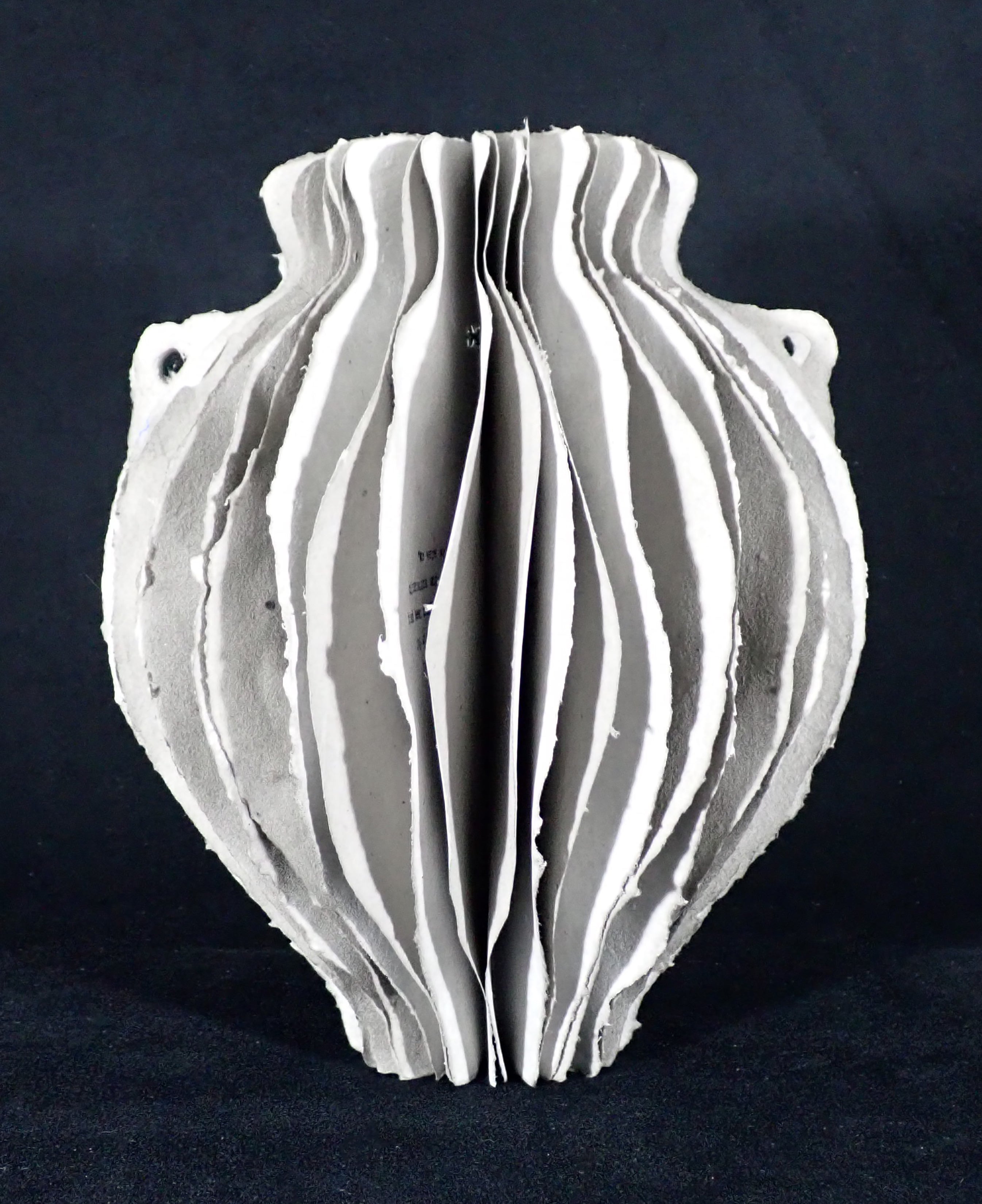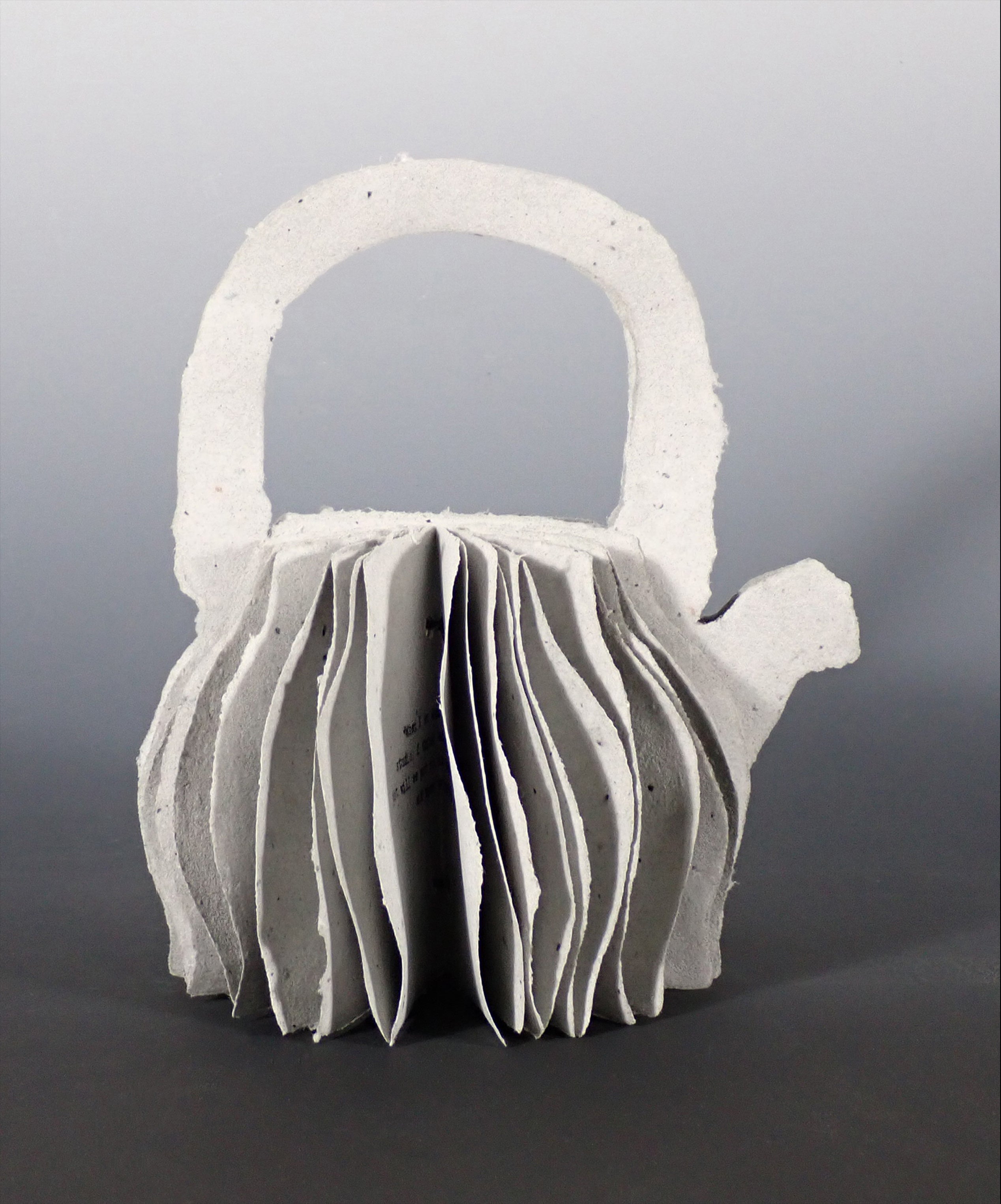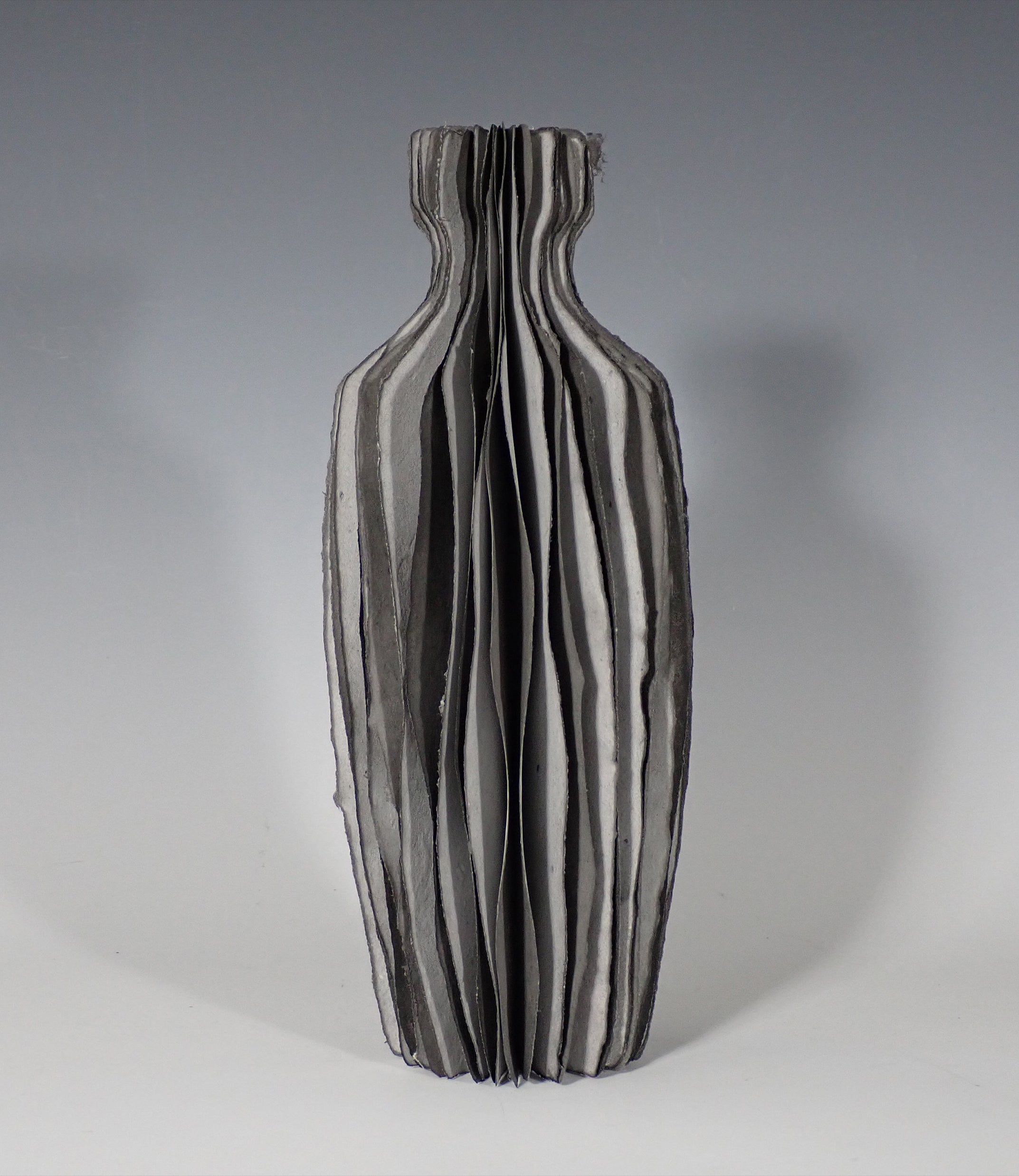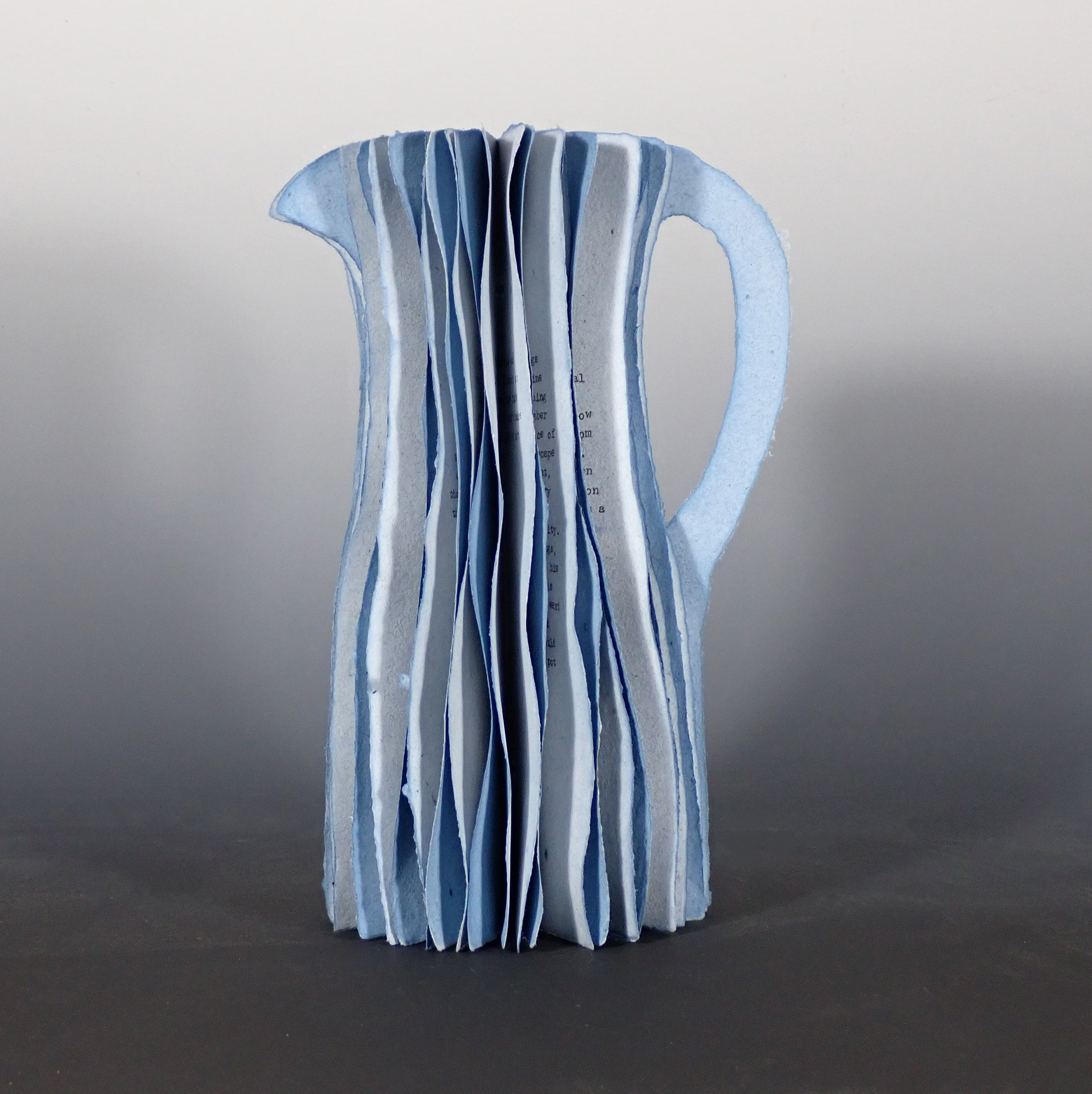Erica Spitzer Rasmussen
-

-
BIO
Erica Spitzer Rasmussen is an artist who creates handmade paper garments and small editions of hand-bound books. She received her BFA and MFA at the University of Minnesota (Minneapolis), which included coursework in Mexico and Greece. Her current work explores family stories and issues of identity. Rasmussen is a recipient of the 2018 Minnesota Book Artist Award and various grants from the Minnesota State Arts Board (1999, 2015, 2018). Other professional highlights include a papermaking residency in Salzburg, Austria (2025), bookbinding residencies in Venice, Italy (2024, 2022, 2018, 2016), a solo exhibition in Mexico City, Mexico (2012), and a residency in Vienna, Austria (2010). Her work has been featured in such magazines as FiberArts, Surface Design Journal, American Craft and Hand Papermaking. Rasmussen teaches studio arts as a full professor at Metropolitan State University in St. Paul, Minnesota. Her artwork is exhibited internationally, and it resides in such collections as the National Museum of Women in the Arts (Washington DC), Harvard Libraries (Boston, Massachusetts),Bainbridge Island Museum of Art (Washington State),the Minneapolis Institute of Art (Minneapolis, MN), the Minnesota History Center (St. Paul, MN), Ripley’sBelieve it or Not!Museum (Hollywood, CA),Stanford University Libraries (Stanford, CA),and theBiblioteca Nazionale Braidense (Milan, Italy).




Little About Erica
What inspires your work?
Family stories or things that are going on in my life. For example, when I was a little girl, my father told me that eating tomatoes would make me “big, strong and hairy chested.” Therefore, much of my work has tomatoes and hair in it.
What is something unexpected about you that often surprises people?
I once worked as a farmhand in Greece. My specialty was killing chickens.
What do you consider your most significant achievement as an artist?
I can’t decide on one thing. Winning the MN Book Artist Award? Artist residencies in Austria and Italy? Books purchased by Havard University, the Bainbridge Island Museum of Art and the National Museum of Women in the Arts?
How has your work evolved over time?
Through graduate school, I became frustrated working two-dimensionally. So, I shifted to working sculpturally in handmade paper. This eventually brought me to bookmaking. Now I combine three-dimensionality with the book arts to make sculptural books.When I studied art, both of my degrees focused on drawing and painting. But halfway
Is there a particular medium or subject you're drawn to, and why?
I love working in handmade paper because it’s so malleable and ecologically sound. One can personalize the page by controlling the contents (anything that can be pressed flat!), the color and the shape. For example, I’ve been known to create books about loved-ones who recently passed. I’ve incorporated their clothing, oncology reports and ashes to pay them tribute. I believe that such conscious decisions to make unique paper stock brings an ephemeral power to the page.
What's the most challenging part of being an artist?
Paying the bills without a day-job.
Do you have a favorite piece you've created? Why does it stand out?
My favorite book was A Blessing and a Curse: The History of Menses. It’s a tiny, red book that unfolds like a blooming flower. Upon closer inspection, one will find that the pages are shaped like mini-pads. The content of the book addresses the fascinating history of menstruation across time and across the globe. For me, it epitomizes the goal of artists’ books, which is a perfect marriage between form and content. Also, the book was so popular, that the limited edition of 20 sold out.
Where were you born and where did you grow up?
I was born in Iowa City and I grew up in south Minneapolis.
Who are your artistic influences or mentors?
My mother (Nancy Stevens MacKenzie), who was a fiber artist and my professor (Diane Katsiaficas), a sculptor. Frida Kahlo and Georgia O’Keeffe also hold a special place in my heart.
What advice would you give to emerging artists?
You’re going to have to work to pay the bills, so study something that will allow you to become a professional. There are several jobs in arts-related fields, like becoming an arts educator, an art therapist, or a curator. That way you can support your art while finding beauty and inspiration in your day-to-day routine.






